Some of the greatest experiences travelers have involve food. And nothing gets us as excited as eating does. So when I realized that such a thing as eating culture existed, I couldn’t wait to learn more about it.
My first eating culture shock happened when I was 12 years old. I was invited to a friend’s home for dinner one night. She was White and from a middle-class family, while I am Black and from a lower-class neighborhood. I didn’t think that such a difference would factor into my dining experience that night, but apparently it did. We ate earlier than I was used to, around 6:00pm. We sat at the table and ate together, which I thought only happened in the movies. For dinner, we had baked chicken (no sauce), mashed potatoes (no gravy), and steamed vegetables (no seasoning). It was the most boring meal I had ever experienced. I remember thinking, “Where’s the salt?” But for fear of sounding disrespectful, I stayed quiet. In fact, everyone was quiet. During. the. whole. meal.
Leaving their home that night, I thought they were so weird. So, so weird. I mean, my family and those in my neighborhood were the complete opposite. Everyone ate at various times of the day; sometimes together, sometimes not. We ate in front of the television, on the couch or in our beds, even on the porch. We talked and laughed as we ate. And everything was seasoned. EVERYTHING. We used Lawry’s seasoned salt so much it was basically considered a side. I didn’t understand why the White family was so different. I was too young (and underexposed) at the time to know about cultural and class differences, and how they could influence mealtimes as well.
My next encounter with food culture was the summer of 2006. I had just finished my sophomore year of college, and was spending the summer volunteering on a farm in Costa Rica. It was my first time out of the country, as well as my first time eating authentic foreign food that wasn’t an American interpretation. On the farm, volunteers had to prepare every meal, including siesta, from scratch. ← Shock #1. Which volunteer helped prepare changed at each meal. When it was my turn, I was more than surprised at how laborious cooking could be. Even the fruit for the drinks had to be picked straight from the garden and squeezed. And whenever we had meat, which wasn’t often (← Shock #2), we had to catch, kill, and prep the chicken. Everything we ate and drank was grown and raised on that one farm. This for a girl who had probably never consumed food that wasn’t processed or pumped full of hormones. A girl that ate meat with almost every meal, though had never been in the presence of a live chicken. And even though college had made me a little more aware of how eating habits and nutritional health ideals derive from culture-based values, I had only gone so far as to acknowledge the differences between foods from different countries, rather than form opinions or new ideas about it. That’s where South Korea came in.
I went to Korea after graduating college in 2008. At that time, I was starting to become a little less close-minded when trying new foods, so I was excited to begin my Korean culinary journey. I didn’t know much about Korean food, other than what I had seen in Korean dramas….and kimchi. For my very first Korean meal, I was invited to my coworker’s fiancée’s home. We had homemade ginger and chicken Korean porridge (also known as ‘samgye juk’). Although the meal was very simple, it was an out-of-body experience for me.
My coworker’s family seemed pretty well off: nicely dressed, reserved, and extremely well-mannered. So during the meal I expected to put on my ‘polite eating’ hat: elbows off the table, taking quiet bites, eating conservative portions, etc. Uh-uh. Not in Korea. There was slurping, picking off of others’ plates, and loud chewing. Whatever I didn’t eat/couldn’t finish the fiancée would reach over and finish it for me. And any time my plate would near empty, the mother would come around and fill it right back up. It was at that time I realized how much Koreans love eating, and more so, eating together.
Now Korean food can take some time to get used to. [Even though I LOVE Korean food now, at that time I thought everything was tasteless (which I now realize meant ‘salty-less’ when compared to most American foods).] But the joy a person gets when eating in Korea comes more from the experience, rather than the food itself. Take Korean barbecue for example. You go to a restaurant and sit on the floor at a long table that has a grill in the middle. You order enough meat for you and those joining you, and you grill it yourself. In addition to the meat, you will have a variety of side dishes that are free and can be refilled as much as you want. They usually include vegetables, rice, soup, and various sauces. But it’s the atmosphere that makes for a very comfortable and communal experience. You really feel at home as you’re lounging and grilling while sharing everything with your group. And this kind of social-collective indulgence applies for almost all Korean meals. To share is to build upon whatever enjoyment you can get from the feast.
Italian food culture is a bit like this as well. Even though people don’t ‘share’ the food per se, dining is a community affair. Meals are prepared by the family; from the pot to the table, everyone has done something to help. I’ve only been here one month, and who knows if my perspective will change. But from my observations, Italian eating culture seems to parallel that of what I have experienced in Costa Rica and Korea. Meals are a group effort. You share the work, and you share the pleasure.
It is because of these experiences that I rarely miss American food. There is no doubt that nutritionally, America could do a lot better. Because we are more ‘independent eaters,’ we consume bigger portions at each meal; unhealthily so. Not to mention we are obsessed with meats and starches, so our plates are not as colorful (full of vegetables) as they should be. And because of chemicals, hormones, and processed food, we don’t have to worry too much about the abundance (or lack thereof) of ingredients, nor their quality. So we fry, season, and butter everything in all different ways. As someone in Italy told me, Americans don’t respect food.
Even though there are American foods that I like, there is nothing about our eating habits that give me pride. I do wish we had an eating culture that valued nutrition and quality like in Italy. As well as one that encouraged sharing and group eating like in Korea. Maybe then we would have a healthier image, as well as a more appreciative outlook on food itself.
What do you think about eating culture? Have I gotten anything wrong about the eating culture in Italy or in America? What’s it like in your country? Is there one that you prefer over the other?
[Disclaimer: I didn’t write this article to say that White people make tasteless food, or that Black people don’t know how to eat healthily. Nor do I want to say that all Americans eat junk. I know that each family is different. I only wanted to recount my past experiences with food, as well as acknowledge the eating trends that each culture and class is stereotyped with.]
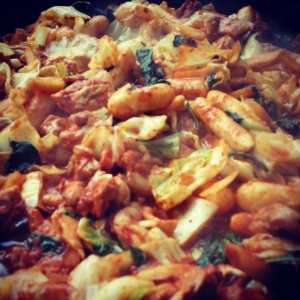
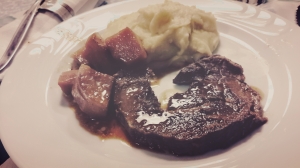
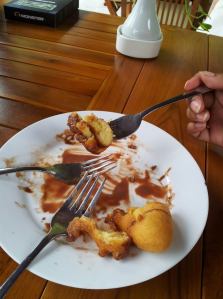
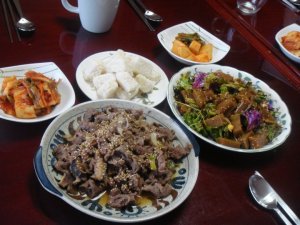
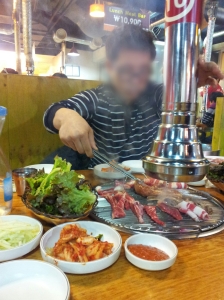
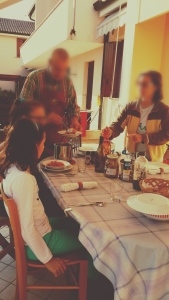
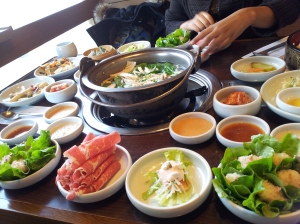
Neat. I am not a big fan of “American” eating culture…or maybe I should say, I’m not used to it. Since I grew up in Hawaii community meals and sharing is etiquette. When I am with my mainland counterparts I realize that when we order something it s a “me” factor rather than an “us” factor. In college, in a small class, I remember all the Hawaii kids bringing in their snack and passing it around the class while the kids from the mainland ate their snacks to themselves. Food should bring people together rather than confine us.
LikeLike
A big YES to that last comment!
LikeLike